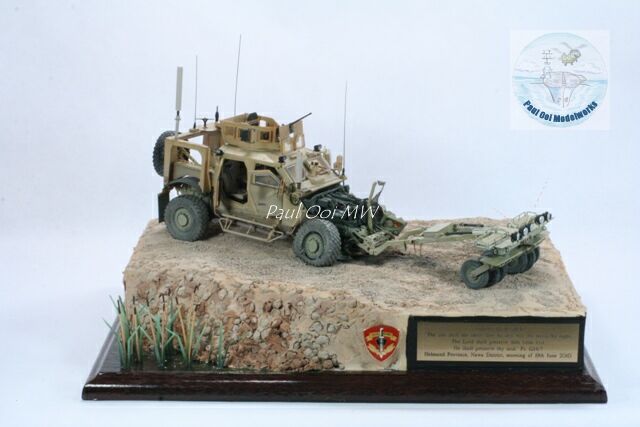
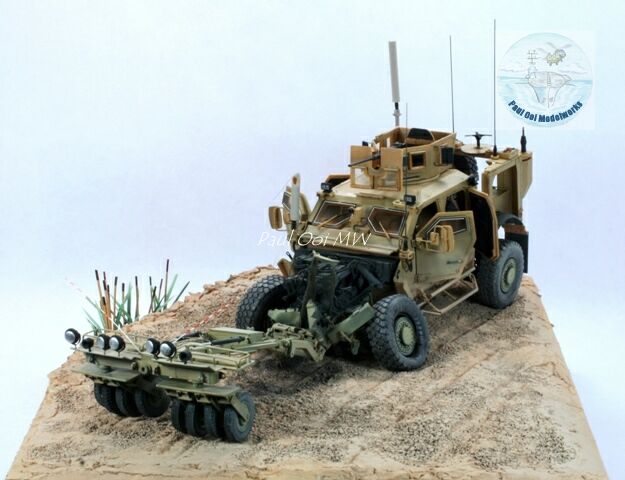
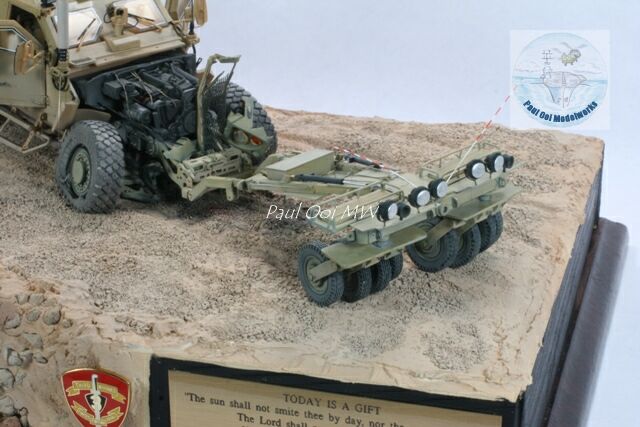
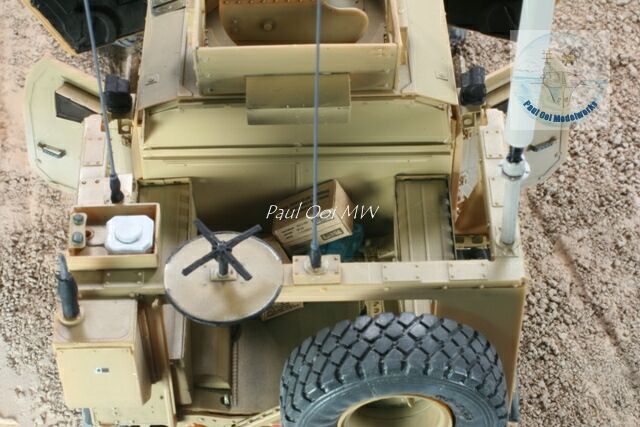
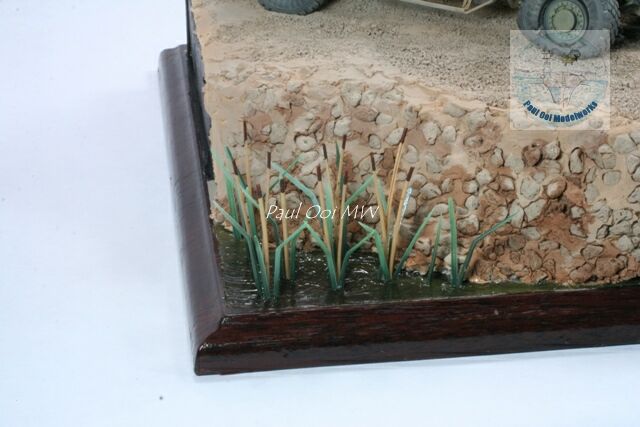
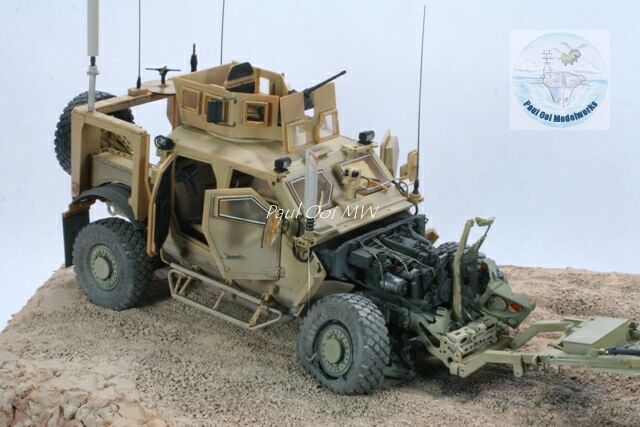
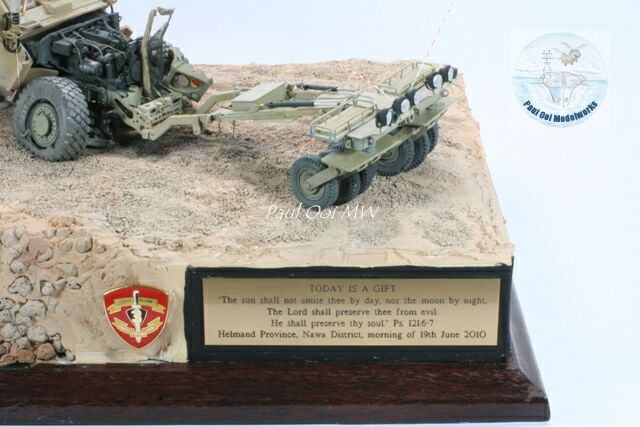
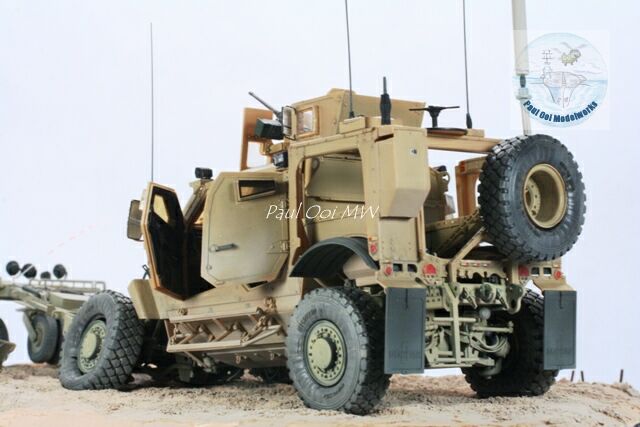
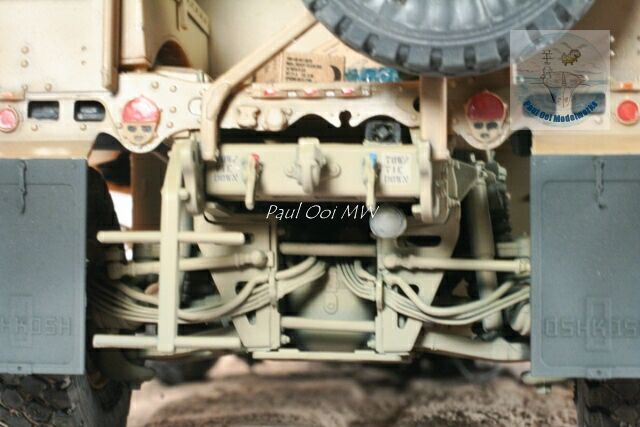
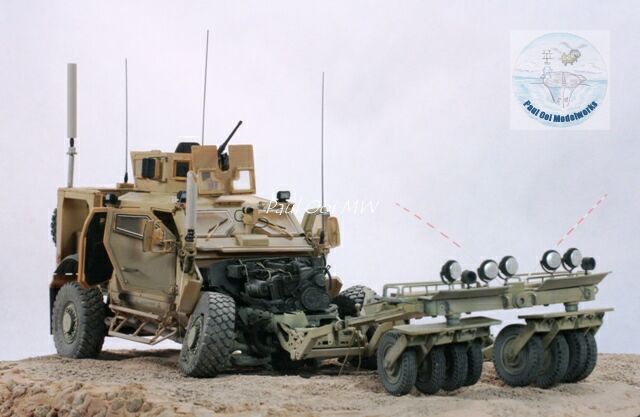
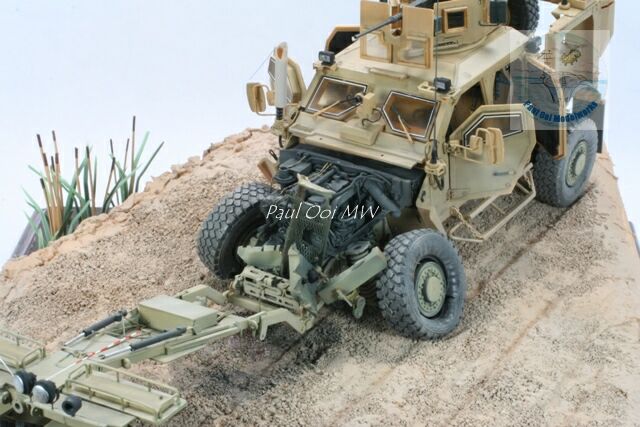
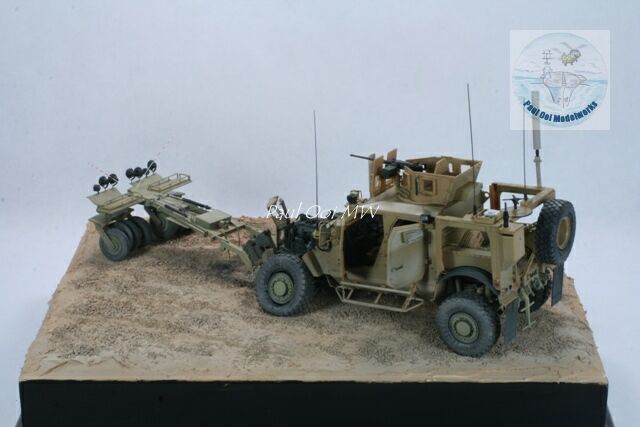
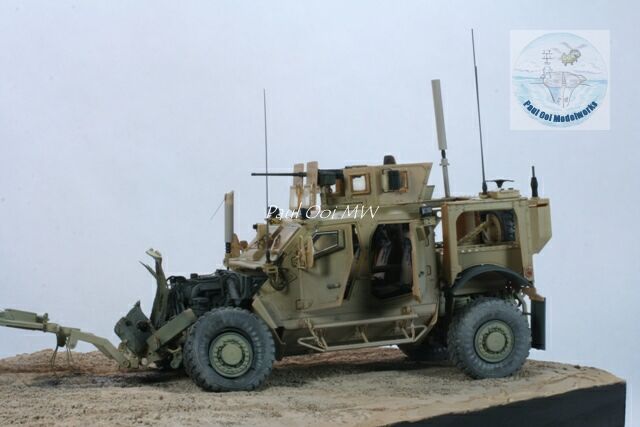
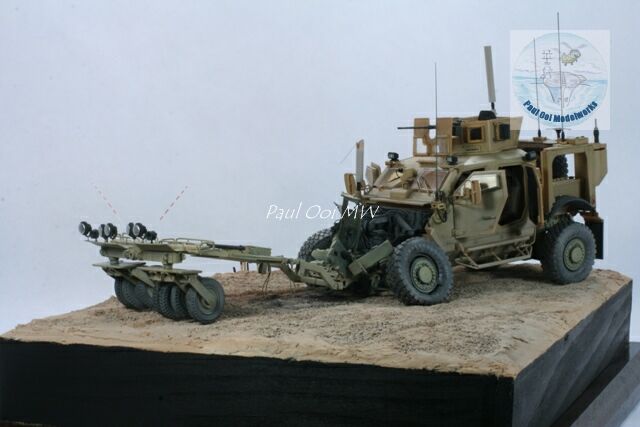
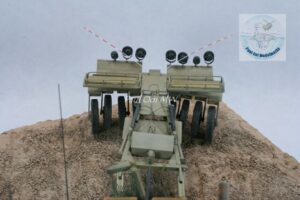

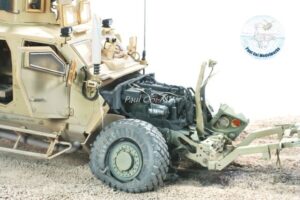
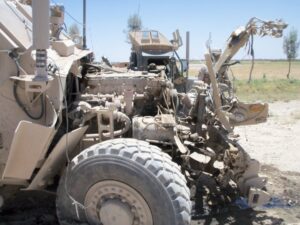
Part 1 of this project was centered around the M-ATV vehicle, and this second part discusses the scratch building of the USMC Panama City Mine Roller. This particular anti-mine device has a superficial similarity to the SPARK Mine Rollers but upon closer examination, has a very different structure. At the time of this post, there are no kits of the Panama City Mine Roller. I obtained a SPARK MIne roller kit to get some resin parts like the hydraulic cylinders, road wheel brackets and spotlights.
From what I could get from checking online sources, the Panama City is a USMC home-grown design based on the hard-earned lessons from the ten years of campaigning in Iraq and Afghanistan. The design is less complicated than the SPARK designs and can be more easily field-maintained. Using commonly available items like tire road wheels also help reduce logistic issues. It seems that this contraption has been adopted by several other allied countries.
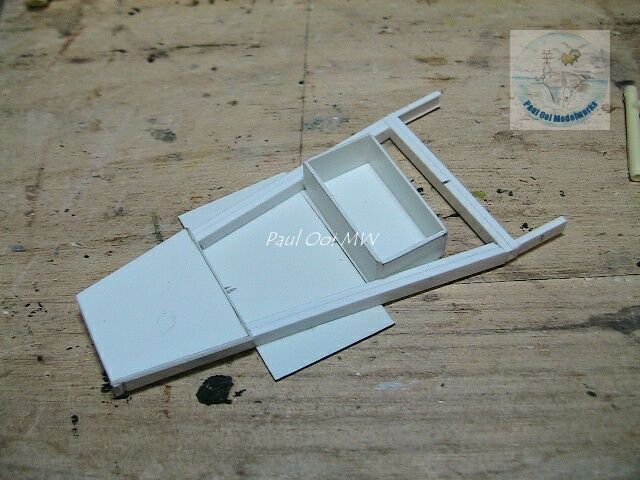
From photographs of the mine roller and scaling the parts to relative features of the MRAP, I was able to build the basic A-shaped frame that forms the main body of the device. The frame is made from Evergreen plastic stock, using C-section and I-beam rods. I made several dry runs by arranging the sections and comparing their positions to the front of the MRAP chassis.
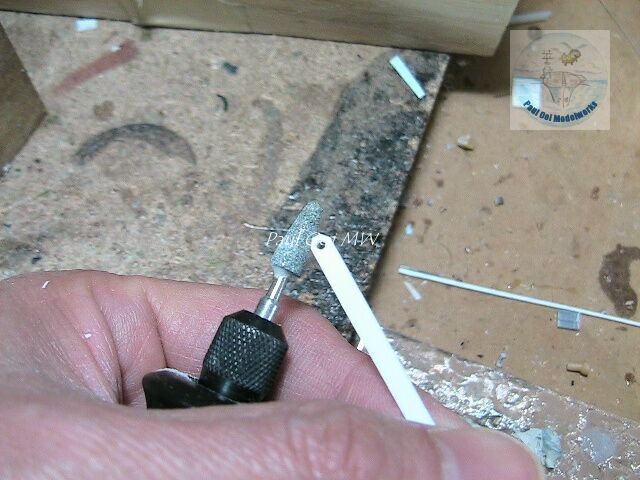
The mine roller has several brackets for towing/lifting and these were machined from flat card stock, piereced with a mini-drill, and then sanded to shape.
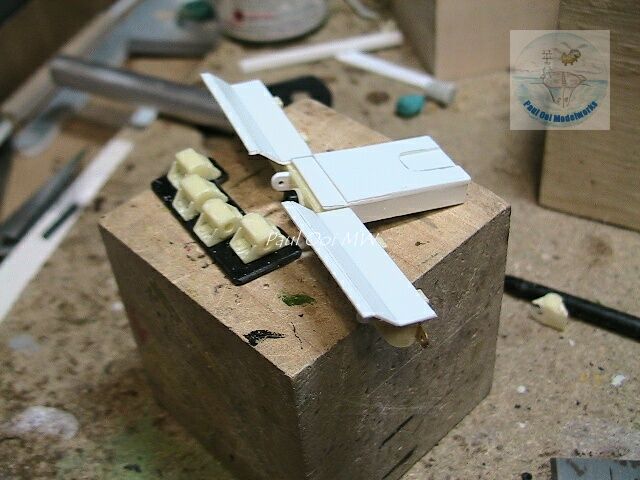
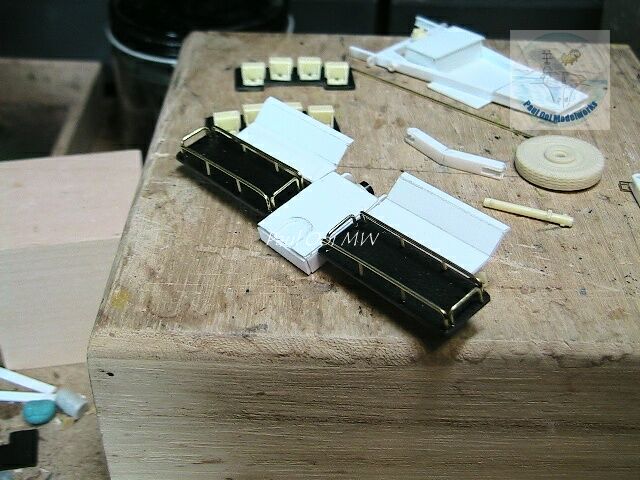
The front portion of the mine roller is built with a cross beam that I also took from the SPARK kit. I removed approximately 2 mm from each end to size the width of the beam down. The steering head is a box-shaped contraption built with Evergreen stock, as were the right and left hand platforms. These platforms provide the supports for the weight plates that are used to simulate the full weight of an actual vehicle. The boundary brackets are made from brass wires bent to shape.
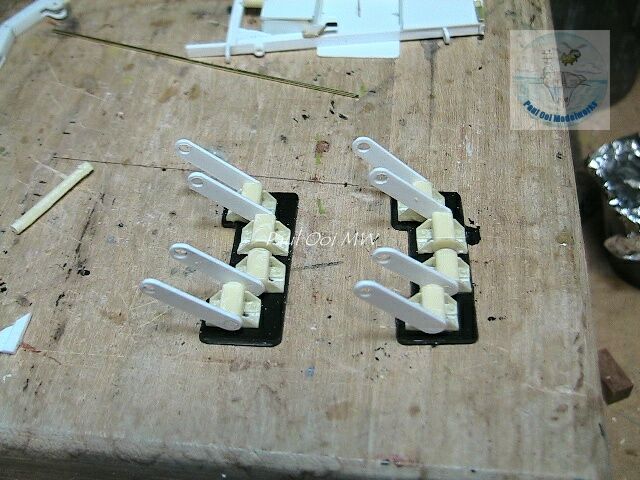
The wheel carriages are cut into shape from black plastic card stock and then attached with the wheel brakcets from the SPARK kit. Because the SPARK kit wheels were smaller diameter solid wheels, I had to remove the original spoke arms and scratch build new ones for the tires used by the Panama City Mine Roller.
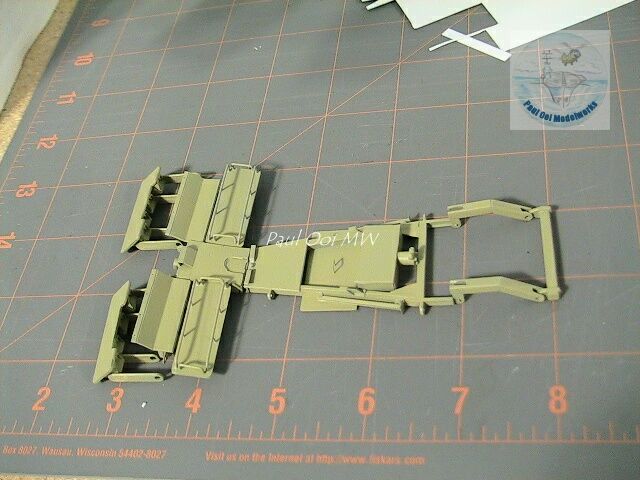
I primed all the main components with primer grey, followed by the Marines Gulf Sand, similar to the M-ATV.
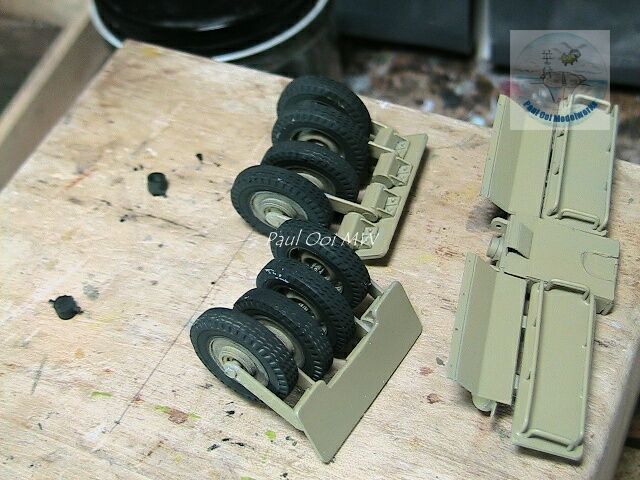
Once properly dried, I attached the road wheels. These were obtained from resin road wheels for WW2 jeeps. Note how the wheels have this staggered appearance with the two middle ones being slight ahead of the 2 out ones.
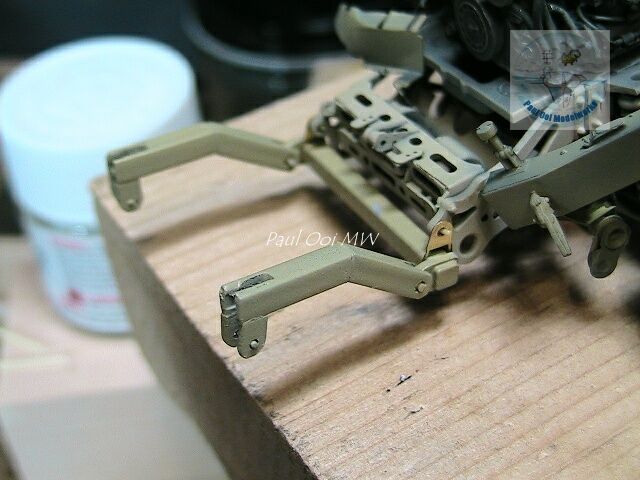
While all these parts are drying, I checked to make sure that the yoke assembly that connect the mine roller to the front of the M-ATV correctly align with the main A-frame as well once attached.
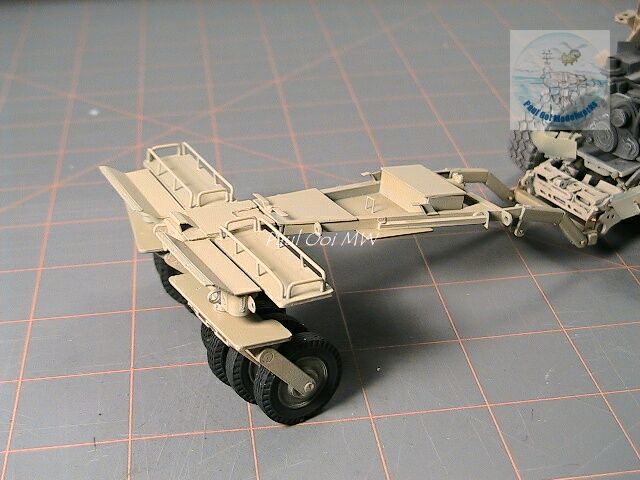
Once the sections are properly dry, it is time to unite all 5 sections of the mine roller together.
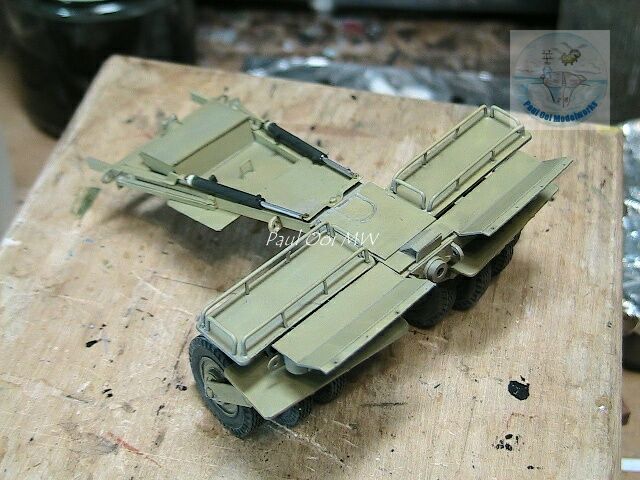
It is only with the main structure properly built then I started to attach the finer fragile parts, like the two hydraulic cylinders along the A-frame of the mine roller.
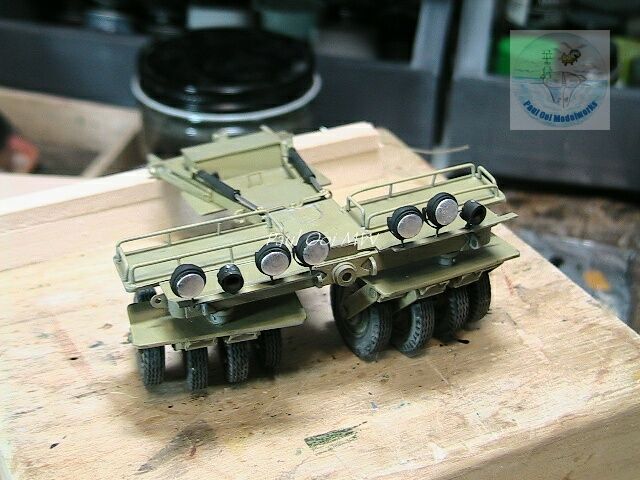
Next, the two front rows of spotlights are attached to the top fenders edging the left and right platforms.
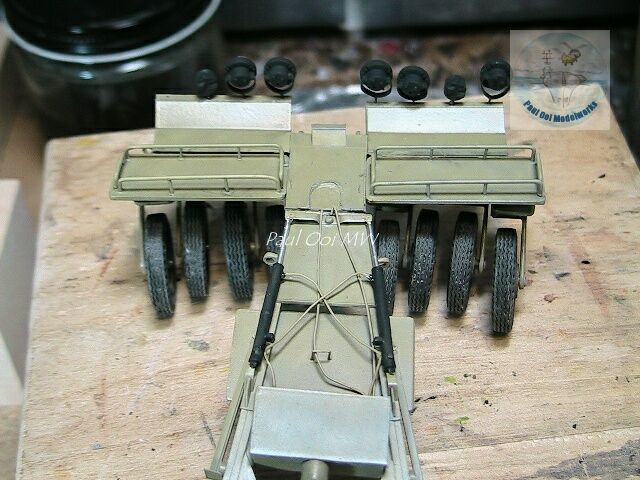
Finally “hydraulic lines” are added to the assembly. After these have properly dried, I gave the entire mine roller assembly a oil paint wash of Paine’s Grey. Once dried, the Mine roller is ready to be attached to the M-ATV MRAP. A final dusting of light buff spray helps to “dust-up” the mine roller to make it look like it has had a dusty morning rolling along the highway.
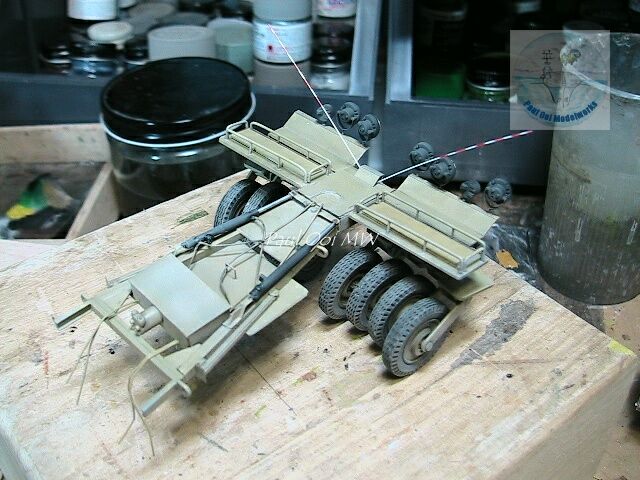
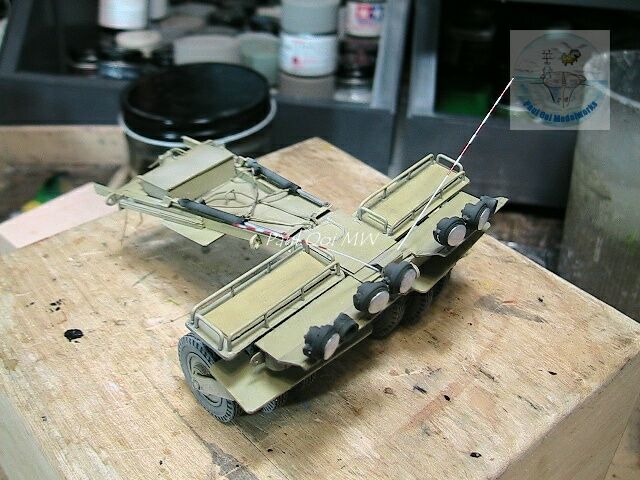
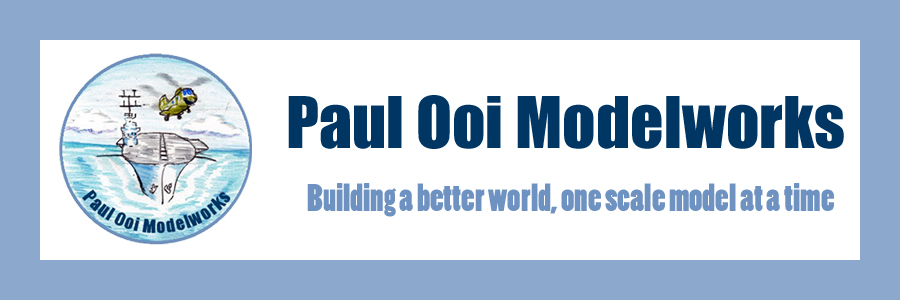
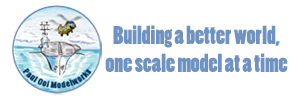
Just saw this while surfing the net looking for photographs of M-ATV with Panama City Mine Roller. As a modeler, I can tell you did a great job on this project. And your base brings it all to life. I’m glad I saw it. Happy Modelling!
I stumbled upon this as well while looking for pictures. I drove these in Afghanistan circa 2011-2012 all throughout southern Helmand Province. The detail is incredible and I couldn’t help but smile as I read through each detailed caption with pictures. Outstanding job!
Hello Mike,
Thank you for your service and glad that you made it home.
Paul